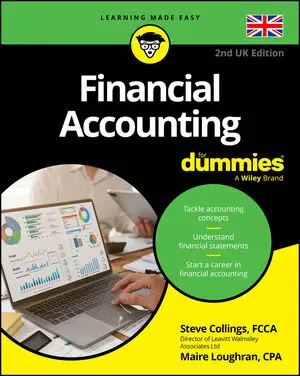Featured Business, Careers, & Money Books

Navigating a Toxic Workplace For Dummies
This friendly, compassionate guide is the antidote to workplace toxicity Toxic workplaces can be bad for your mental and physical health, and they're one of the leading causes of employee turnover. Navigating a Toxic Workplace For Dummies explores what causes work environments to turn sour, and what you—as an employee, manager or leader—can do about it. You'll learn why people engage in toxic behavior like bullying, harassment, exclusion, and disrespect at work. More importantly, you'll gain the tools and skills to counter that behavior with positivity. Every individual, at every level of an organization, can make a difference in detoxifying the workplace. Don't let the stress of your job environment weigh you down. Let this Dummies guide teach you to support yourself and the people around you. Discover the signs and symptoms of a toxic workplace Learn why people do toxic things, and how to protect yourself Get advice on reporting harassment and other behaviors to HR Understand how to make organizational change as a manager, HR or leader Lead your organization in a detoxification campaign Navigating a Toxic Workplace For Dummies is a must for anyone who has dealt with or is currently dealing with a toxic situation at work, as well as managers and leaders committed to resolving toxic situations.

Finanzas Personales Para Dummies
Consejos sólidos de gestión personal del dinero con perspectivas para el mundo actual Finanzas Personales para Dummies ha estado abordando la alfabetización financiera durante 30 años. Esta décima edición continúa proporcionando los consejos que han ayudado a millones a volverse financieramente alfabetizados, mientras aborda problemas financieros actuales. Aprende los conceptos básicos de ganar, ahorrar, invertir, pedir prestado, presupuestar y proteger tus activos. Explora preocupaciones modernas como el mercado inmobiliario, la volatilidad del mercado, las criptomonedas y el presupuesto para metas financieras. Reduce la ansiedad financiera construyendo un plan sólido, gastando e invirtiendo sabiamente, y gestionando deudas. ¡Sigue los consejos que han ayudado a los lectores durante tres décadas! Vuélvete financieramente alfabetizado para minimizar deudas y establecer metas realistas Aprende los conceptos básicos de la inversión y toma decisiones inteligentes de inversión Entiende los seguros para proteger tu salud y tus activos Controla tus gastos y crea mejores presupuestos para afrontar grandes gastos Finanzas Personales para Dummies ofrece consejos sólidos para todas las edades y niveles de gestión personal del dinero. Nunca es demasiado temprano o tarde para entender tus finanzas.

Agile Project Management For Dummies
Put agile techniques into practice to boost your efficiency and effectiveness Agile Project Management For Dummies introduces you to the planning and execution approaches that can help you complete projects more quickly, with higher quality and using fewer resources. For companies in any industry—not just software development—agile project management reduces waste and increases transparency, while addressing customers' ever-changing requirements. This book lays out the principles and practices of agile techniques in jargon-free language that anyone can understand. You'll learn all the important terms, tools, and concepts, so you can infuse agility into your projects right away. Create a product roadmap and prepare for product launches with ease, thanks to this Dummies guide. Discover why agile techniques are so popular with many of the world's most successful businesses Use agile principles to manage the scope, time, cost, team dynamics, quality, and risk of any project Learn how Inclusion makes organizations more agile, and create an agile-friendly culture of flexibility and productivity within your team and organization Explore how the agile world is changing with new developments like artificial intelligence Agile Project Management For Dummies is great for project and product managers, as well as anyone in any industry who wants get up to speed on how to be more agile.




